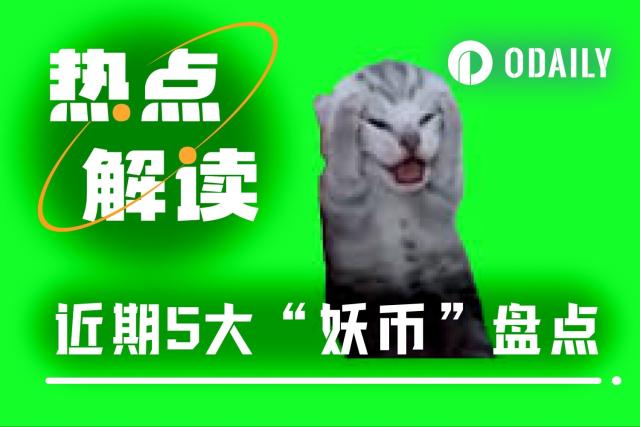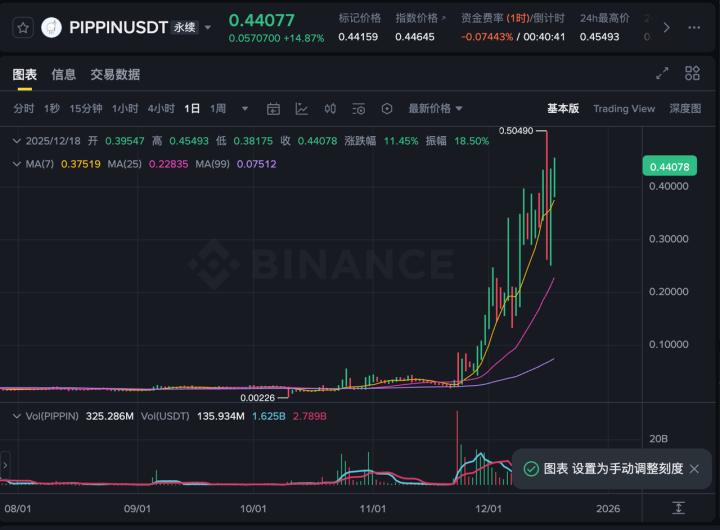Uniswap, the DeFi giant, recently announced the launch of Unichain, a dedicated Ethereum Layer 2 testnet built using the OP Stack developer tools provided by Optimism. This means that this DEX, which accounts for over 15% of Ethereum network fees, will move the execution of transactions to Layer 2, significantly reducing transaction fees and latency. Unichain will also join the Optimism Superchain universe, sharing liquidity. The technical documentation also mentions user-friendly keywords such as account abstraction, but this could be a warning sign for the Ethereum mainnet.
Table of Contents
ToggleWhy Build Your Own Layer 2? Unichain: Finding the Balance Between User Experience and Decentralization
We previously mentioned that 90% of Ethereum transaction fees occur on decentralized exchanges, and in the first half of 2024 alone, Uniswap accounted for 15% of network fees. As the most successful DeFi protocol, Uniswap has processed $2.4 trillion in transactions and has millions of users. So why would Uniswap move the execution of transactions to Layer 2 when it's doing well on the mainnet?
Uniswap states that the biggest flaw of the Ethereum mainnet is its lack of user-friendliness, as evidenced by the mainnet's block time of around 12 seconds. In contrast, so-called Ethereum killers like Solana have reduced block times to 400 milliseconds. Additionally, fees are also a weakness of Ethereum, and Uniswap directly points out that moving the execution of transactions to Layer 2 can save over 95% in transaction fees.
However, Ethereum is not without its advantages, and many protocols still remain on the Ethereum mainnet primarily because it is the most extensively tested and stable public blockchain. Emerging blockchains like Solana and Ton have faced complete network shutdowns when faced with large transaction volumes. As the first blockchain capable of running smart contracts, Ethereum's stability, security, and decentralization are reasons it is difficult to surpass.
Uniswap states that Unichain's unique technical architecture can improve the user experience while maintaining decentralization, something that other Ethereum scaling solutions have failed to achieve. The mainstream Layer 2 solutions are often criticized for being too centralized, with their sequencers alone able to generate hundreds of millions or even billions in revenue. Mert, the CEO of Helius Labs, also tweeted that currently, every major Layer 2 can technically steal user funds, and at the time, Vitalik stated that only Arbitrum and Optimism had reached Stage 1.
TEE Helps Rollup-Boost Resolve the Conflict Between Decentralization and User Experience
The announcement positions Unichain as a Layer 2 designed specifically for DeFi, and this is evidenced by some of its technical features, such as faster block times to reduce MEV attacks.

Uniswap Labs and OP Labs have jointly created Rollup-Boost, a verifiable block generator supported by Trusted Execution Environment (TEE) technology. Trusted Execution Environment (TEE) is a technology that can ensure that code and data run in a secure isolated environment. In blockchain applications, TEE can ensure the privacy of the data and computation process of smart contract execution, as well as improve the efficiency of verification.
Through Rollup-Boost, Unichain will reduce the block time to 1 second, and will soon introduce Flashblocks with a block time of 250 milliseconds. This solves five problems:
- Fast Confirmation Time
Flashblocks can confirm transactions within 250 milliseconds, greatly reducing the time users have to wait for transaction confirmation. This speed is crucial for user experience, especially in applications that are very speed-sensitive (such as decentralized exchanges). Compared to the confirmation times of seconds to minutes on Ethereum, Flashblocks provides transaction confirmation speeds comparable to or even exceeding Solana. - Native Revert Protection
Flashblocks provides a native transaction revert protection mechanism, which means that users can reduce their risk when a transaction fails, without having to pay additional gas fees. This helps improve the predictability of blockchain transactions. - Increased Gas Throughput
Flashblocks increases the throughput of the blockchain network (i.e., the processing capacity of gas) by increasing the number of transactions that can be accommodated in each block. This can reduce transaction congestion and be able to handle more transactions during high traffic periods, reducing transaction latency and gas fee volatility. - Verifiable Priority Ordering
Flashblocks provides a verifiable transaction priority ordering mechanism internally. This gives users stronger assurance that their transaction order is based on a predetermined priority, and will not be arbitrarily reordered by miners or validators (a common problem in many blockchains, known as "Maximal Extractable Value (MEV)"). - Internalizing MEV for Applications
Through verifiable priority ordering, applications can internalize MEV. MEV refers to the additional profits that block producers can obtain by reordering, inserting, or canceling transactions. The Flashblocks mechanism allows applications to control these ordering logics themselves, reducing external interference, and thus better protecting users and improving the transparency and fairness of transactions.
Unichain separates the role of block generator and sequencer, using a verifiable block builder (Verifiable Block Builder) developed in collaboration with Flashbots. The block building operation is performed in the open-source build code library running on Intel's TDX hardware, which provides confidential data access and verifiable execution through its computational integrity features. The breakthrough in executing on the TEE is that the proof of execution will be publicly released, allowing users to verify that the block was built in the TEE as specified.
The MEV trilemma assumes that blockchain designers can only choose one of three bidding models: Explicit Auction, Spam Auction (which creates a lot of transaction volume and clogs the network), and Latency Auction (which is in some ways more decentralized and less advantageous for retail investors). Blockchains like Solana typically default to latency auctions, but this leads to relatively centralized computation nodes.
Rollup-Boost uses TEE's remote attestation and scalability technologies to reduce the geographical node centralization problem. Essentially, TEE also replaces on-chain logic with provable, super-cheap off-chain execution (similar but not the same as regular Layer 2). Rollup-Boost currently still uses centralized RPC and sequencers, but the application of TEE will gradually transition to a more decentralized infrastructure, ensuring that transactions are not exposed to third parties throughout the execution process. While TEE cannot replace decentralized consensus, it has stronger trust and security compared to other block generators.
Join the Superchain Universe, Can the OP Family Become the Solution for Ethereum?
We have mentioned Optimism's Superchain project several times. In short, anything developed using the OP Stack can be considered part of the Superchain. The so-called Superchain is actually the same as the chain abstraction narrative, where users using Superchain won't even notice they're using a specific chain. Specific chain abstraction includes shared liquidity, shared gas fees, and so on. For example, I don't need to consider whether I'm using Base ETH or OP ETH, when I participate in a smart contract on the Superchain, the gas fee is universal, avoiding the hassle of cross-chain transactions. Chain abstraction is not only user-friendly, but also a solution to the fragmented liquidity of hundreds of public chains.
According to the previous Optimism Superchain airdrop eligibility announcement, OP Mainnet, Base, Zora, Mode, Metal, Fraxtal, Cyber, Mint, Swan, Redstone, Lisk, Derive, BOB, Xterio, Polynomial, Race and Orderly are all part of the Superchain ecosystem. Sony's Soneium and Unichain will also join this big family going forward.
It's like the Warriors team with Stephen Curry and Klay Thompson adding KD - you can say they're teaming up, but they're really strong. For Unichain, this is also a wise move, as the DeFi chain that focuses most on liquidity, and the Superchain alone integrating the liquidity of OP Mainnet and Base is enough to defeat the Layer 2s on the market.
The technical document also mentions the narrative of account abstraction, although account abstraction is also difficult to define, but we can generally understand it as lowering the usage threshold of the blockchain. For example, users don't need a mnemonic phrase, just login with their Facebook/Twitter Web 2 accounts to have their own blockchain address. Although some may think that binding with Web 2 social media goes against the ideal of decentralization, it is undeniable that this is a necessary process in pushing the technology towards widespread adoption, and users using the technology without knowing it is indeed an inevitable process (see the report on Meta pushing AR technology towards widespread adoption).
The Key to the 20% Surge in Token Price, Unichain's PoS Mechanism Empowers the UNI Token
Next, let's talk about the key to the nearly 20% surge in the UNI token price, the way Unichain's validator nodes operate is by establishing a decentralized Unichain Validator Network (UVN), composed of multiple node operators responsible for independently verifying the latest state of the blockchain. This design aims to reduce the risks of a single sequencer architecture, and accelerate the finality of blocks, especially the settlement speed of cross-chain transactions.
Node operators must stake the native Unichain token UNI on the Ethereum mainnet in order to become validators. The amount of UNI tokens staked will be recorded by Unichain's smart contract, which will receive notifications of staking or unstaking operations through the native cross-chain bridge.
The blocks of Unichain are divided into epochs of a certain length, and at the beginning of each epoch, a snapshot of the current staking amount is taken, and the rewards for each staked token are calculated. Participants will add their staking weight to a specific validator, thereby increasing the staking weight of that validator. The validators with the highest staking weight will be selected as the active set, and these validators are eligible to validate blocks and receive corresponding rewards.
Mainnet launch in November, can Unichain trigger a Layer 2 technology revolution?
More importantly, Unichain is a modular Layer 2. This means that this technical framework is open-source and available for various Layer 2s to use. Unichain is the first application launched after Rollup-Boost, but through open-source technology, more Layer 2s can utilize TEE technology to improve blockchain efficiency and user experience while ensuring decentralization and solving the MEV problem.
The testnet has already been launched, and the official statement is that the mainnet will be launched in November. Starting in early 2025, the features outlined in the technical documentation, such as provable block construction and the Unichain verification network, will be gradually realized.
Data reveals Unichain may overwhelm Ethereum?
However, the author also warns of a problem. According to data, the amount of ETH burned by Uniswap alone in the past 30 days accounts for 13% of the entire Ethereum network. And after the implementation of EIP-4844, the transaction fees on Layer 2 will be significantly reduced. Uniswap has stated that moving transactions to Layer 2 can save 95% in fees, which means the token burn rate on Ethereum may see a significant change.
Currently, the Ethereum token maintains an annual growth rate of 0.7%, and Unichain will launch its mainnet in November. Perhaps a month later, we can gradually verify whether the migration of Uniswap transactions will have a significant impact on the Ethereum token.
Another point is the previous report from CoinShares, which mentioned that the usage of Ethereum has become predominantly speculative. For example, 90% of Ethereum's transaction fees occur on decentralized exchanges, with Uniswap accounting for 15% of the entire network. This is why the author believes Uniswap's move could have a significant impact on Ethereum.
Another TMI (Too much information) is that MEV accounts for half of the transaction fees in the Ethereum infrastructure, which is closely related to the problem Unichain aims to solve.
(CoinShares Report: Concerned about Ethereum's long-term value, reveals the key drivers of Ether)
Uniswap's decision to build its own Layer 2 also validates the concerns of developer Max Resnick. As he said, the relationship between the Ethereum mainnet and Layer 2 no longer seems to be mutually beneficial. Layer 2 may even be the "Ethereum killer".
He believes that the Ethereum mainnet and Layer 2 need to differentiate in terms of transaction types to end the tense competitive relationship. Layer 1 should focus on how to improve the mainnet efficiency to the level of Layer 2, and the more features of Ethereum that Layer 2 inherits (such as decentralized sequencers), the closer it will be to Ethereum.
(Ethereum developer discusses development dilemma, reveals Ethereum has gone off track)
Celebrity comments on Uniswap's redundancy, security concerns
SlowMist founder Yu Chao commented on Twitter: "Originally, a protocol that operates stably on Ethereum has security that has been tested for a long time, including the security of the centralized part, smart contract security, and blockchain infrastructure security. This protocol needs to focus on doing a good job on the security of the centralized part, smart contract security, etc., which is already very difficult... At this time, it also wants to create its own Layer 2... so it has to deal with many aspects of blockchain infrastructure security... The complexity of security has skyrocketed from 10 to 100... Why bother to trouble yourself? Why bother to trouble the users..."







